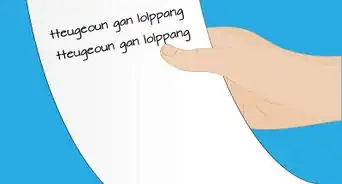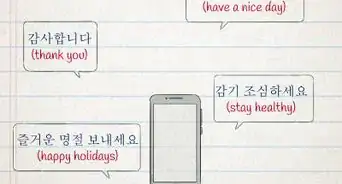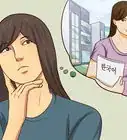This article was co-authored by wikiHow staff writer, Jennifer Mueller, JD. Jennifer Mueller is a wikiHow Content Creator. She specializes in reviewing, fact-checking, and evaluating wikiHow's content to ensure thoroughness and accuracy. Jennifer holds a JD from Indiana University Maurer School of Law in 2006.
wikiHow marks an article as reader-approved once it receives enough positive feedback. This article received 23 testimonials and 90% of readers who voted found it helpful, earning it our reader-approved status.
This article has been viewed 1,656,059 times.
Learn more...
Korean culture is more polite and formal than most Western cultures. If you plan to travel to Korea, or just want to talk to Korean friends, learning polite words and phrases, such as how to say "thank you," is a must. The most common way to say "thank you" in Korean is 감사합니다 (gam-sa-ham-ni-da). While this phrase is considered polite and formal, it's appropriate in any situation when you're speaking to a stranger. There are other more informal ways to say "thank you" in Korean to friends and family members.[1]
Steps
Cheat Sheet
Thanking Someone Formally
-
1Say 감사합니다 (gam-sa-ham-ni-da) in most settings. This is the most common way to say "thank you" in Korean. It's considered polite and formal, so you would use it with adults you don't know. You can also use it with children or people younger than you who you don't know.[2]
- Korean culture, in general, is more polite and formal than what you might be used to. Use polite, formal language out in public, such as when you're thanking a shopkeeper, server, or sales clerk.
Tip: If you only learn one way to say "thank you" in Korean, learn 감사합니다 (gam-sa-ham-ni-da). It is appropriate in more situations than any other Korean expression of gratitude.
-
2Switch to 고맙습니다 (go-map-seum-ni-da) in public when you want. 고맙습니다 (go-map-seum-ni-da) is interchangeable with 감사합니다 (gam-sa-ham-ni-da), and can be used in similar situations. While 감사합니다 (gam-sa-ham-ni-da) is more common, 고맙습니다 (go-map-seum-ni-da) is also used frequently.[3]
- If you're talking to friends with whom you'd normally speak more informally, the politeness of this phrase can communicate more sincere gratitude. You might use it, for example, when thanking a friend for going out of their way to help you with something serious or important.
Advertisement -
3Use 아니요 괜찮습니다 (a-ni gwaen-chan-seum-ni-da) to politely turn down something offered. If someone offers you something that you don't want, you should still be polite in your refusal. 아니요 괜찮습니다 (a-ni gwaen-chan-seum-ni-da) is appropriate with adult strangers and means, roughly, "no, thank you."[4]
- To refuse an offer from someone familiar to you, but with whom you should still be polite (such as an older relative or other adult), say 아니요 괜찮아요 (a-ni-yo gwaen-chan-a-yo).
- If you want to say "no, thank you" to someone your age or younger who you're on familiar terms with, say 아니 괜찮아 (a-ni gwaen-chan-a). Never use this phrase with strangers or people older than you, even if you're close to them – it will be considered rude.
Offering Informal Thanks
-
1Use 고마워요 (go-ma-weo-yo) when you still need to be polite. If you're thanking someone who is close to you but is also older than you, this form indicates a polite respect for the person's age. However, this is still considered a relatively informal phrase and should not be used with strangers.[5]
- If you use 고마워요 (go-ma-weo-yo) with people you don't know, this polite phrase suddenly becomes rude. If you're not sure if it would be okay to use this phrase, use one of the formal expressions of gratitude instead.
-
2Say 고마워 (go-ma-weo) when thanking a close friend or family member. This phrase is very informal and is considered appropriate only if you're talking to close friends or family members around your age or younger than you. If you have a lot of Korean friends or are going to school in Korea, you may find that you use this quite often.[6]
- Avoid using this phrase to say "thank you" to anyone you don't know, even if they're considerably younger than you, unless they are small children. Casual Korean is never used between adults who are strangers, even if there is a significant age gap between you.
Tip: Notice that 고마워요 only has one extra character than 고마워. That final character sounds like "yoh," and is what makes your thanks polite rather than simply informal. Anytime in Korean you see a word ending in 요, it indicates politeness towards the person being spoken to.
-
3Add 정말 (jeong-mal) before your thanks to indicate deeper gratitude. If you say 정말 고마워요 (jeong-mal go-ma-weo-yo) or 정말 고마워 (jeong-mal go-ma-weo), you mean something similar to "thank you very much" or "I'm very thankful." You can use this if someone really goes out of their way to help you or if you just want to sound sincere.[7]
- You can add 정말 (jeong-mal) to the beginning of formal expressions of gratitude as well. For example, if you lost your passport in a restaurant and a server helped you find it, you might say 정말 고마워요 (jeong-mal go-ma-weo-yo) to them.
- You can also add 정말 (jeong-mal) to be more emphatic about turning down something offered to you. For example, you might say 아니요 정말 괜찮아요 (a-ni-yo jeong-mal gwaen-chan-a-yo). In context, it's a bit like saying "No really, it's okay, thank you" or "Thank you very much, but no" in English.
Responding to Thanks
-
1Say 아니에요 (a-ni-ae-yo) in most situations. 아니에요 (a-ni-ae-yo) is the most common thing Koreans say in response to "thank you." While it's similar to saying "not at all," or "no problem" in English, the phrase literally means "no, it is not." If you know a little Korean, it may seem strange to say this in response to "thank you," but Koreans don't mean it literally.[8]
- 아니에요 (a-ni-ae-yo) is the polite form, but is appropriate in most situations. If you need to be more formal, such as if you're responding to someone older than you or in a position of authority, use 아닙니다 (ah-nip-nee-da).
Tip: Korean language textbooks may tell you that 천만에요 (chun-man-e-yo) means "you're welcome." However, while this phrase is the equivalent of saying "you're welcome" in English, it's seldom used in spoken Korean, except in extremely formal settings, such as if you were meeting a government dignitary. You'll see it more often in written Korean.
-
2Use 별말씀을요 (byeol-mal-sseom-eol-yo) to mean "don't mention it." 별말씀을요 (byeol-mal-sseom-eol-yo) is another common way to say "you're welcome" in Korean when someone thanks you for something. This is the polite form of this phrase and is appropriate when you're talking to strangers.[9]
- This phrase is typically taken to mean that thanks aren't necessary – you were glad to do whatever it was you did or it was no trouble for you.
- There isn't a more formal form of this particular phrase, so you might not want to use it if you are talking to someone significantly older than you or someone in a position of authority. You might come off as rude.
-
3Try 괜찮아요 (gwen-chan-ah-yo) as an alternative to 아니에요 (a-ni-ae-yo). 괜찮아요 (gwen-chan-ah-yo) is another common response to "thank you" in Korean. This phrase translates to "it's okay" or "it's alright" in English. It is used interchangeably with 아니에요 (a-ni-ae-yo).[10]
- 괜찮아요 (gwen-chan-ah-yo) is the polite form. If you need to be more formal, such as with an adult you don't know or a person in a position of authority, use 괜찮습니다 (gwen-chan-seup-nee-da).
Community Q&A
Did you know you can get answers researched by wikiHow Staff?
Unlock staff-researched answers by supporting wikiHow
-
QuestionHow do I say "What are you doing?" in Korean?
 wikiHow Staff EditorThis answer was written by one of our trained team of researchers who validated it for accuracy and comprehensiveness.
wikiHow Staff EditorThis answer was written by one of our trained team of researchers who validated it for accuracy and comprehensiveness.
Staff Answer wikiHow Staff EditorStaff Answer
wikiHow Staff EditorStaff Answer -
QuestionHow do I say 'I'm in love with you' in Korean?
 wikiHow Staff EditorThis answer was written by one of our trained team of researchers who validated it for accuracy and comprehensiveness.
wikiHow Staff EditorThis answer was written by one of our trained team of researchers who validated it for accuracy and comprehensiveness.
Staff Answer wikiHow Staff EditorStaff Answer
wikiHow Staff EditorStaff Answer -
QuestionHow do I say "sorry" formally and informally?
 Community AnswerFormal way : 죄송합니다(Jae song hap ni da). Informal way : 미안해(Me an he). Usually, use the formal way to elder person even you are close with them.
Community AnswerFormal way : 죄송합니다(Jae song hap ni da). Informal way : 미안해(Me an he). Usually, use the formal way to elder person even you are close with them.
References
- ↑ https://domandhyo.com/2018/08/how-to-say-thank-you-in-korean.html
- ↑ https://www.youtube.com/watch?v=1byQKqok4_Q
- ↑ with https://www.youtube.com/watch?v=1byQKqok4_Q
- ↑ https://domandhyo.com/2018/08/how-to-say-thank-you-in-korean.html
- ↑ https://domandhyo.com/2018/08/how-to-say-thank-you-in-korean.html
- ↑ https://blogs.transparent.com/korean/thank-you-in-korean/
- ↑ https://domandhyo.com/2018/08/how-to-say-thank-you-in-korean.html
- ↑ https://blogs.transparent.com/korean/you-are-welcome-in-korean//
- ↑ https://blogs.transparent.com/korean/you-are-welcome-in-korean/
About This Article
Say “Thank You” in Korean informally with the phrase “Gomawo/고마워” (goh-mah-woh) or formally with the phrase “Gomabseumnida/고맙습니다” (goh-mab-seub-ni-da). For variations and situation-specific “Thank You” phrases, read on...


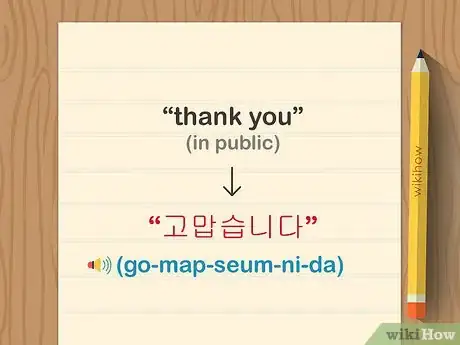
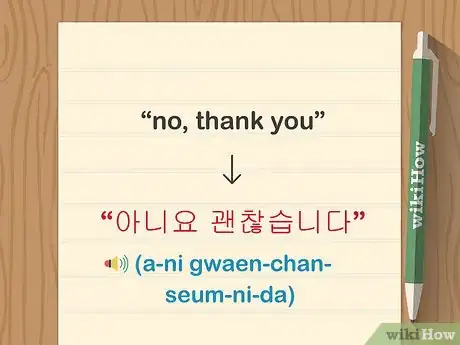
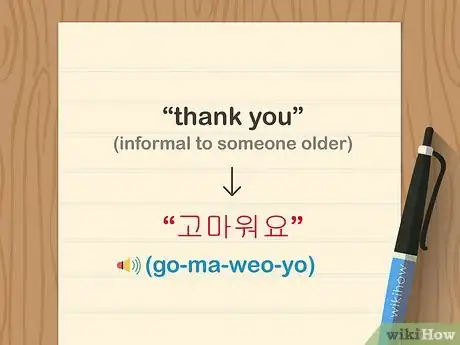

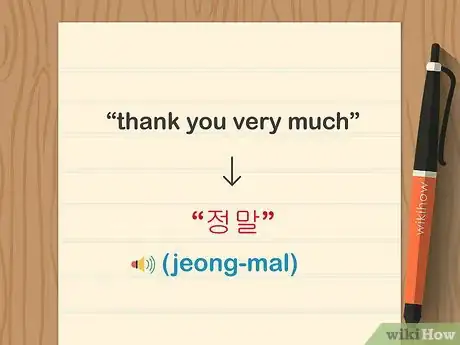
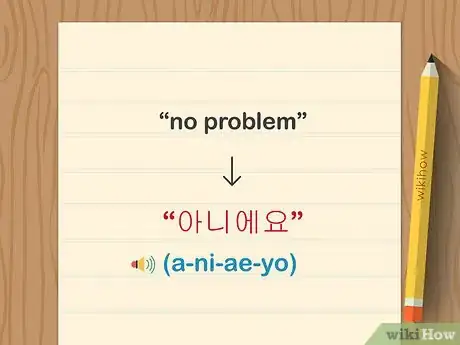
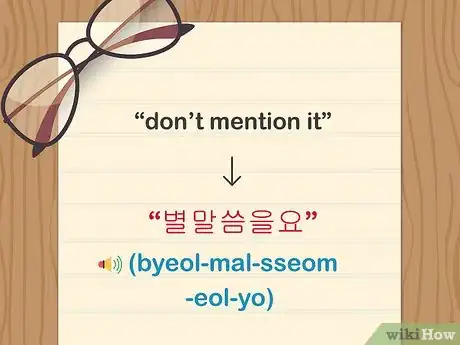
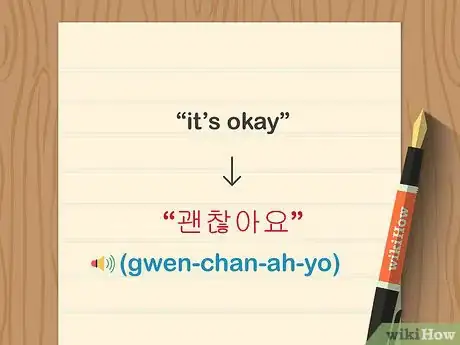


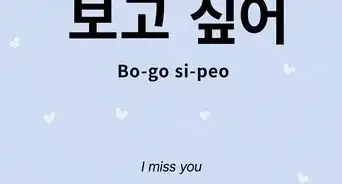
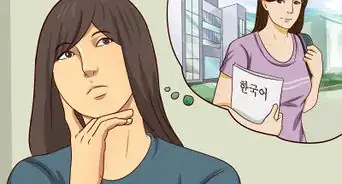
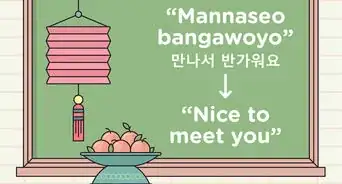
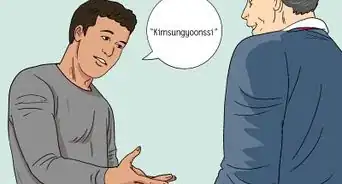
-Step-4.webp)
